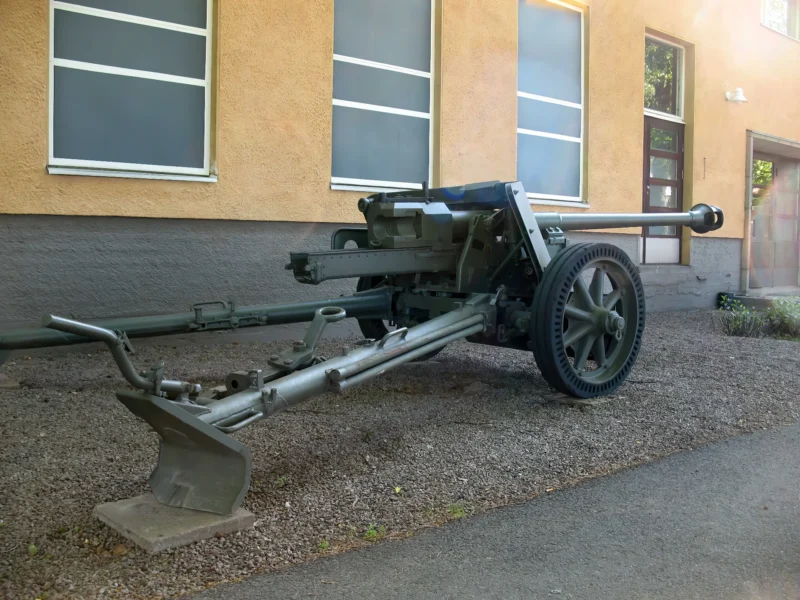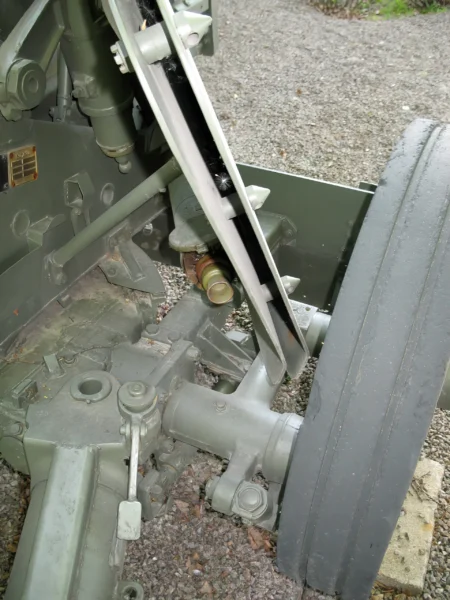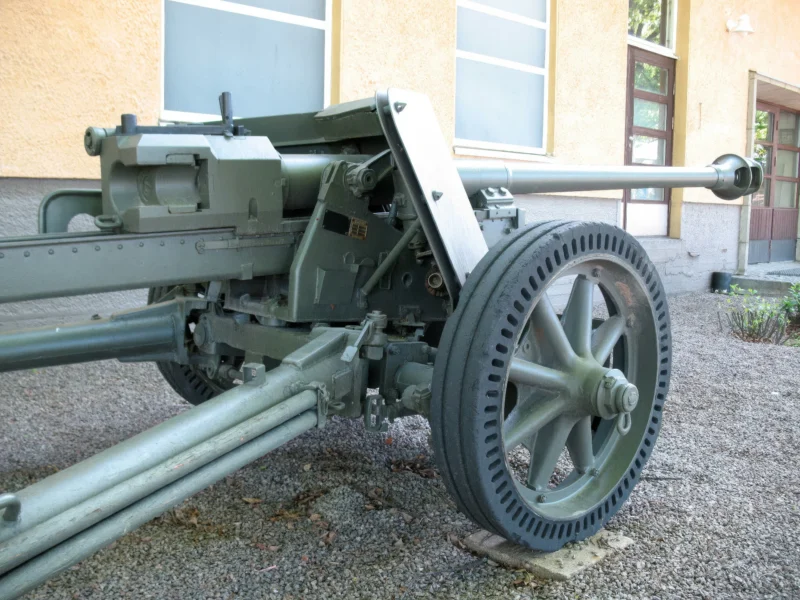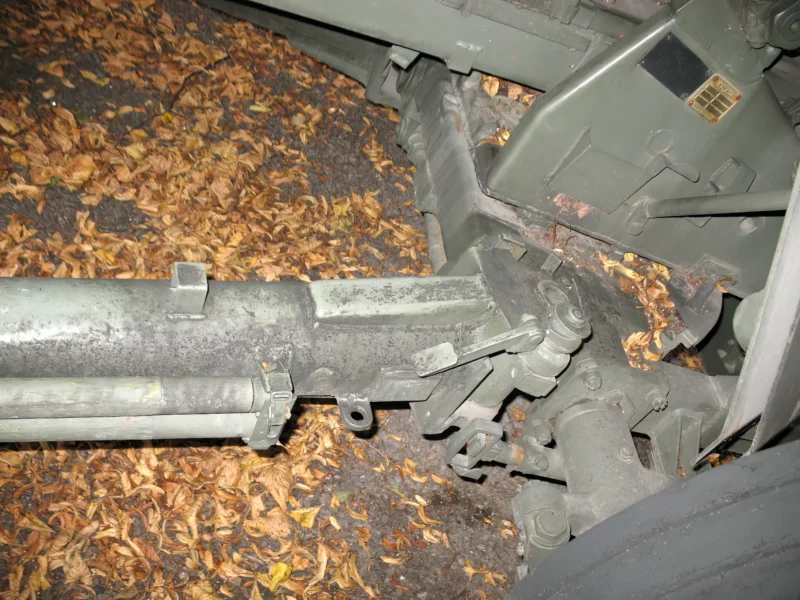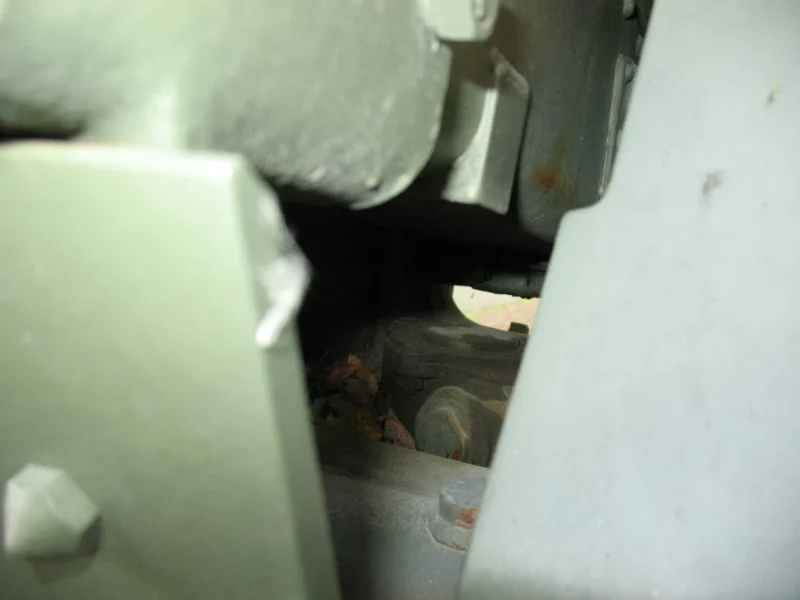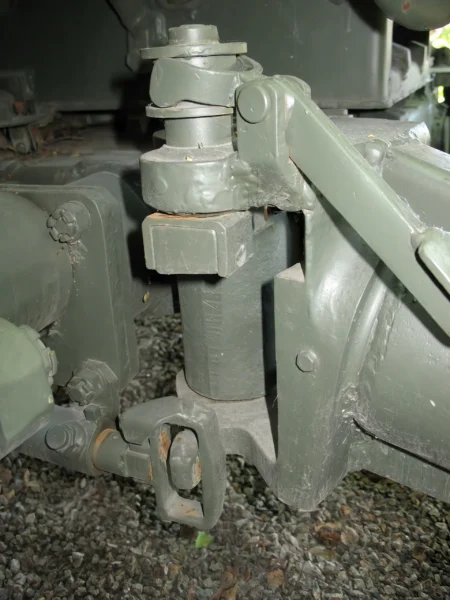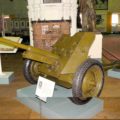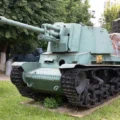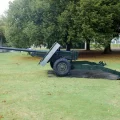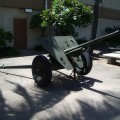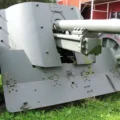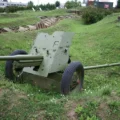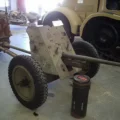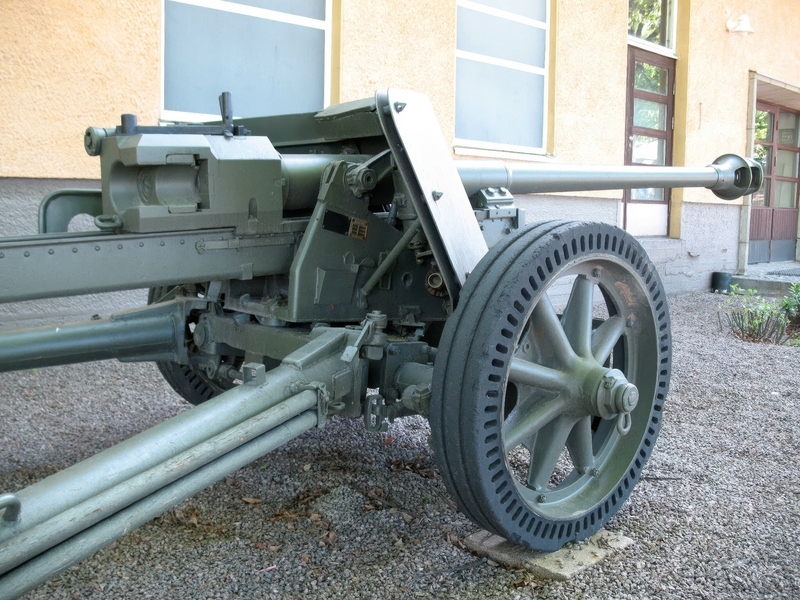
Pak 40 | |
|---|---|
| Land | Nazi-Duitsland |
| Role | Antitankpistool |
| In gebruik | 1942–1945 |
| Gebouwd | 20000+ |
De 7,5 cm Pak 40 (7,5 cm Panzerabwehrkanone 40) was a German 75 millimetre anti-tank gun developed in 1939-1941 by Rheinmetall and used during the Second World War. The Pak 40 formed the backbone of German anti-tank guns for the latter part of World War II, mostly in towed form, but also on a number of tank destroyers such as the Marder series. Approximately 20,000 Pak 40s were produced. A modified version of the gun designed specifically for vehicle-mounting was the 7.5 cm KwK 40, which differed primarily in using more compact ammunition, thereby allowing more rounds to be carried inside the vehicles. The KwK 40 armed many of the German mid-war tank and destroyer designs, replacing the Pak 40 in the latter role.
Bron: Pak40 op Wikipedia
| Pak 40 | |
|---|---|
| Fotograaf | Onbewust |
| Lokalisatie | Onbewust |
| Foto 's | 121 |
Zie ook:
De 7.5 cm Panzerabwehrkanone 40 (PaK 40) was a German towed anti-tank gun that became the primary anti-tank weapon of the Wehrmacht’s infantry and *Panzerjäger* (tank destroyer) units during the latter half of World War II. Its development was accelerated after the German invasion of the Soviet Union exposed the inadequacy of the smaller 3.7 cm PaK 36 against new tanks like the T-34 and KV-1.
Key Features and Specifications
- Rol: Heavy towed anti-tank gun.
- Kaliber: 75 mm.
- Main Weapon: The PaK 40 utilized a long, high-velocity barrel (L/46 or L/48, depending on source) that provided excellent muzzle velocity, delivering superior armor penetration compared to earlier guns.
- Ammunition: It primarily fired Armor-Piercing Capped Ballistic Cap (APCBC) and Armor-Piercing Composite Rigid (APCR, a tungsten core shell) rounds, capable of defeating virtually all Allied and Soviet medium tanks at typical combat ranges. It could also fire High-Explosive (HE) rounds for infantry support.
- Gewicht: At over 1,400 kg (3,086 lbs), it was significantly heavier than its predecessors. This increased weight required a motor vehicle, typically a half-track, for reliable towing, reducing its tactical mobility compared to light field guns.
- Shield: Equipped with a large, sloping gun shield to provide frontal protection for the five-man crew against small arms fire and shell fragments.
- Versatility: Due to its effectiveness, the PaK 40’s barrel and breech mechanism were adapted for use as the main weapon on numerous armored vehicles, known as the 7.5 cm KwK 40 (on the Panzer IV) and the 7.5 cm StuK 40 (on the StuG III/IV).
Impact and Legacy
The PaK 40 was arguably Germany’s most important response to the growing threat of Allied and Soviet armor. Over 23,000 guns were produced, making it the most mass-produced German anti-tank gun of the war. It was instrumental in providing the infantry with a heavy defensive capability, capable of stopping Allied tanks in the critical battles on the Eastern Front, North Africa, and the subsequent fighting in Italy and Normandy.
Despite its weight causing deployment difficulties on the battlefield, the PaK 40’s sustained performance ensured its use until the final days of the conflict. Its long barrel and powerful ammunition defined the capabilities of German anti-tank forces for most of the middle and late war period.
Views : 10965
